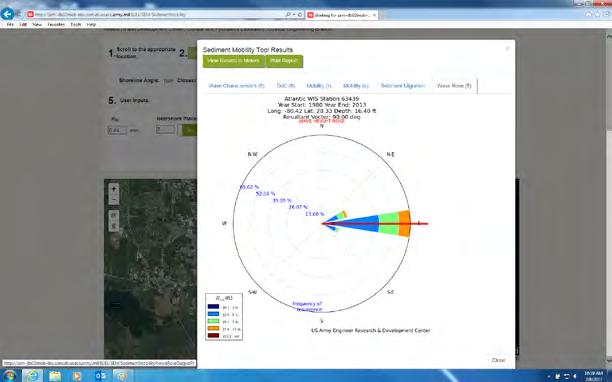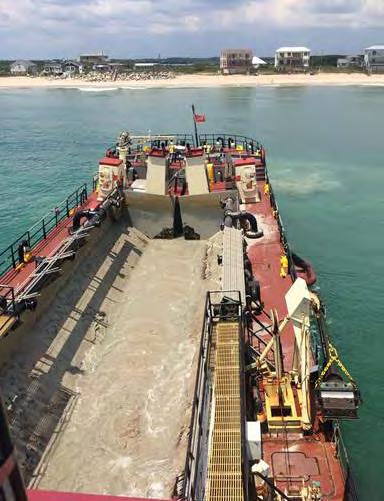
2 minute read
Nearshore Nourishment & the Sediment Mobility Tool
APPROXIMATELY $5 THOUSAND COST SAVINGS PER PROJECT
$110 THOUSAND (APPROX.) IN THE COLUMBIA RIVER COST SAVINGS PER SEASON SOLUTION
Advertisement
Channels are regularly dredged to maintain navigable water depths. Historically, dredged sediment was placed in offshore dredged material disposal sites. However, because this practice takes sediment out of the system, it can potentially lead to erosion downdrift of the channel. An alternative approach places material in the nearshore to keep sediment in the littoral zone. Placing in the nearshore reduces costs, nourishes adjacent beaches, and protects the shoreline by attenuating high-energy waves. This strategy has become common practice, but answers to key questions about whether the sediment will move and where it is likely to go are challenging. The Sediment Mobility Tool (SMT) was developed to assist coastal engineers and planners in determining locations for nearshore placement areas. SMT is a simple web application available through the Corps’ Navigation Portal (https:// navigation.usace.army.mil/DIF/Explore). It can rapidly produce a preliminary assessment of how often sediment placed in the nearshore will be mobilized and the direction of sediment transport.
PROBLEM: Nearshore nourishment is a form of strategic sediment placement that can reduce waves, use natural forces to sort coarse sand from fine material, and transport sand onshore. It is a common strategy to beneficially use sediment from dredging projects that keeps sediment in the system and potentially reduces costs. However, questions exist about how quickly sediment placed in the nearshore will move and the direction it will travel. Time and budget restrictions often prevent the use of robust numerical models to study these projects.

SOLUTION: To address key regulatory and stakeholder questions, ERDC created the Sediment Mobility Tool (SMT) to assist planners and engineers in rapidly identifying and evaluating potential nearshore placement sites. The tool was designed to save both time and money; it is also an effective communication tool to garner support of regulators and stakeholders for nearshore nourishment projects.
IMPACT: The SMT saves on a project-by-project basis by completing in five minutes what previously took a coastal engineer a week, saving approximately $5,000 per project. It also provides guidance for nearshore nourishment placement, which can save money while keeping sediment in the system for healthier and more resilient coastlines. For a recent project at the mouth of the Columbia River, placing sediment in the nearshore led to approximately $110,000 in cost savings per season compared with the deepwater placement site, with the added value of keeping sediment in the littoral system.













